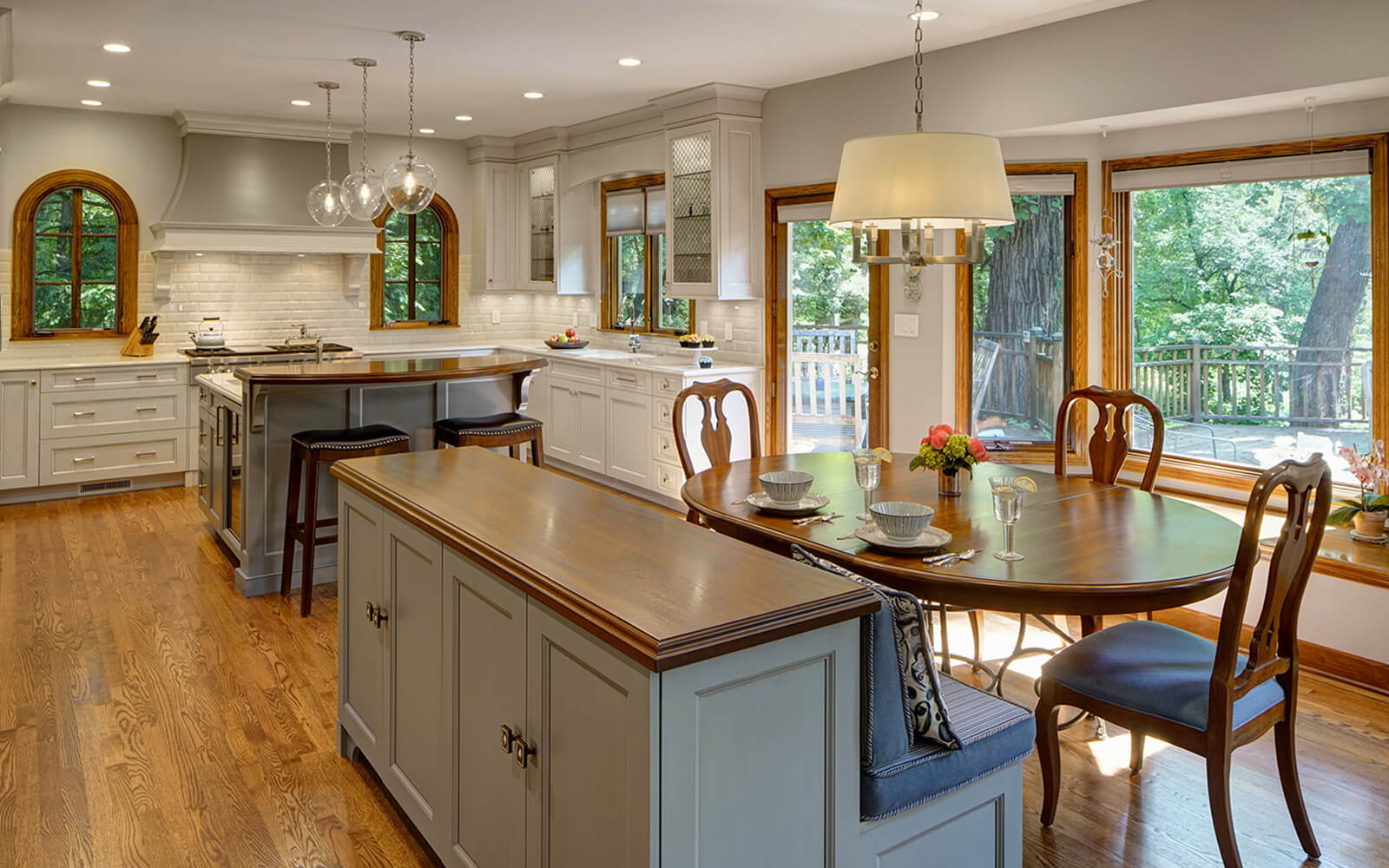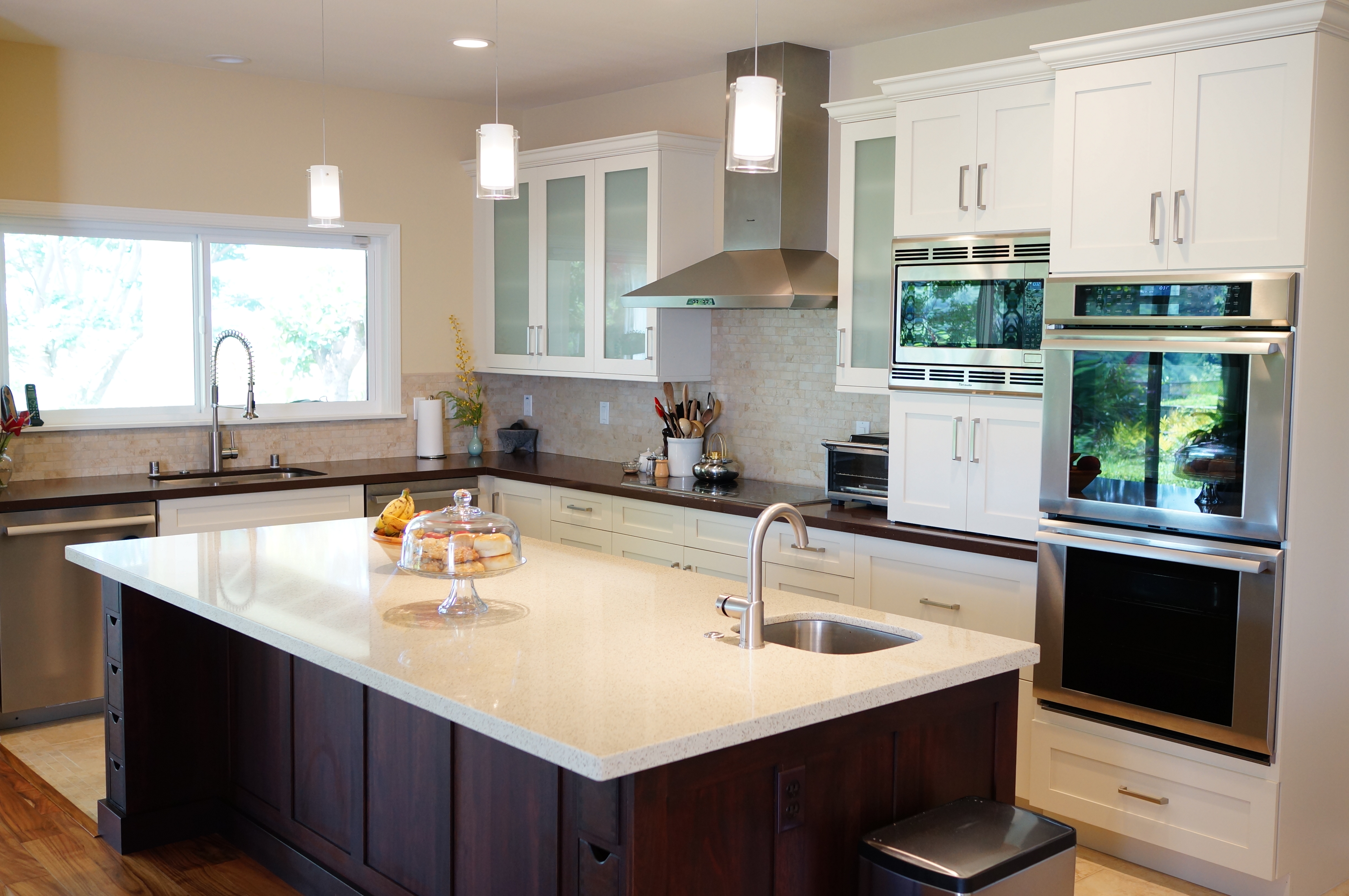

A G-shaped kitchen increases the number of base cabinets included in the design, and this increases storage space along with a more streamlined cooking area.

FLOOR PLAN KITCHEN UPGRADE
This design is an extension of the “U-shaped” kitchen and is often a logical upgrade for those homeowners who already have the U-shaped kitchen cabinetry installed. It got its name because this design resembles the letter “G” on a blueprint grid. The G-shaped or peninsula kitchen is the term used to describe a situation where cabinetry includes a prep-area peninsula and four walls of storage. The shape refers to the floor plan layout where the kitchen design is built into a corner where two walls form a perpendicular angle, where one wall is at least twice as long as the other. The L-shape design is timeless and works well in any aesthetic style or décor. The L-shape is a perfect choice for smaller kitchen spaces that cannot fit an island into the design or are not large enough to accommodate a “G-shaped” design. What makes it work is that it supports the kitchen work triangle with specific preparation, cooking and clean-up areas. The L-shaped kitchen is a well-established design whose ergonomics make it a sensible and popular choice for many homeowners. Of course, there are often design variations within specific plans, but for this topic, let/s explore the pros and cons of the five most common kitchen floor plan shapes. These floor plans have become standardized specifically because they offer homeowners the most efficient use of space for their particular remodeling situations. Cabinets, appliances, flooring, tile, and countertops may be specific to each home, but kitchen designers typically stick to design templates concerning kitchen floor plan layouts. The Pros and Cons of Five Common Kitchen Floor PlansĮvery kitchen remodeling is unique regarding the aesthetic needs of the homeowner.


 0 kommentar(er)
0 kommentar(er)
